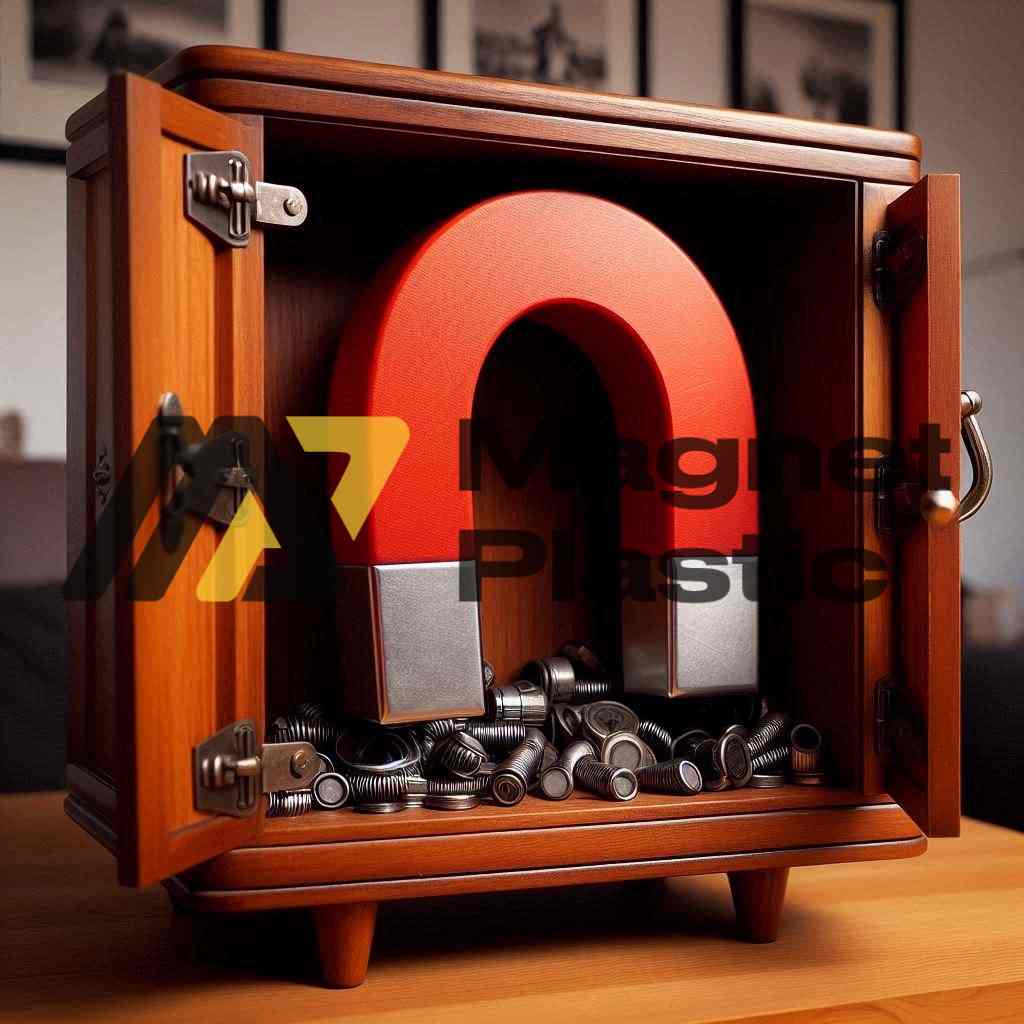Magnets for the Furniture Manufacturing Sector
In the furniture industry, the use of magnets for the furniture manufacturing sector has transformed both functionality and design, streamlining assembly processes and improving the aesthetics of the final product. From hidden fastening options to modular systems, magnets offer notable advantages in terms of efficiency and customization. Below we describe the main uses of magnets in furniture design, their benefits, and the reasons that have made them a popular choice for creating versatile and aesthetically appealing pieces.
Why incorporate magnets in furniture manufacturing?
Magnets for the furniture manufacturing sector allow for solutions without visible hardware, such as screws or nails, which provides a great advantage in terms of both aesthetics and functionality. These fastening systems ensure a firm structure and facilitate effortless assembly and adjustment, ideal for modular and detachable pieces. By eliminating visible fastening elements, magnets also help to improve the appearance of furniture, giving a clean, contemporary finish that is highly valued in today’s design.
Main applications of magnets in furniture
Magnetic closures on doors and drawers: Magnets for the furniture manufacturing sector are widely applied in door and drawer closures, being ideal in kitchen furniture, wardrobes and cupboards. This system uses a magnet and a metal plate that attract each other, achieving a secure closure without the need for handles, which facilitates a minimalist and functional aesthetic.
Assembling modular pieces: The use of magnets facilitates the joining of modules in furniture, allowing them to be assembled and disassembled quickly. This is especially useful in office furniture and storage systems that require flexible configurations. Modules with magnets allow the arrangement to be changed according to needs without compromising the structure or damaging the material.
Removable shelves and brackets: Magnets also offer practical solutions for adjustable shelves and brackets. With their magnetic fastening system, these elements can be removed and relocated without complications or damage to the surface, making them ideal for furniture in home and commercial environments.
Magnetic decoration and customization: Decorative accessories such as panels, handles and interchangeable details benefit from the use of magnets, which allow users to customize their furniture without permanently modifying the design or material, improving the user experience.
Adjustable and ergonomic furniture: For adjustable tables and desks, high-power magnets offer mounting options that facilitate the movement and adjustment of furniture, making it an excellent option for offices or spaces that require constant changes in furniture layout.
Advantages of magnets in furniture manufacturing
The use of magnets for the furniture manufacturing sector provides benefits ranging from functionality to product aesthetics:
Quick and easy assembly: Magnetic fastening eliminates the need for additional tools, making it easy to assemble and disassemble furniture, which is advantageous for manufacturers and end consumers.
Versatility and adaptation: Magnetic systems allow furniture to be easily customized, adapting to the needs of each user in different spaces such as offices and homes.
Modern and Clean Design: The elimination of visible screws and hardware provides a contemporary and attractive aesthetic, ideal for minimalist and modern interior design.
Durability and Safety: High-quality magnets are strong and long-lasting, minimizing wear and tear from continuous use. Additionally, by eliminating visible fastening components, the design is safer, avoiding potential injuries.
Conclusion
The integration of magnets into the furniture manufacturing sector brings a modern and efficient approach to furniture design, optimizing both aesthetics and functionality. From discreet magnetic closures to modular mounting systems, magnets allow manufacturers to create versatile, high-quality products that adapt to the trends and needs of the contemporary user. This trend of innovation with magnets continues to grow, reaffirming its importance in the design of furniture that seeks to be practical, durable and visually appealing.
